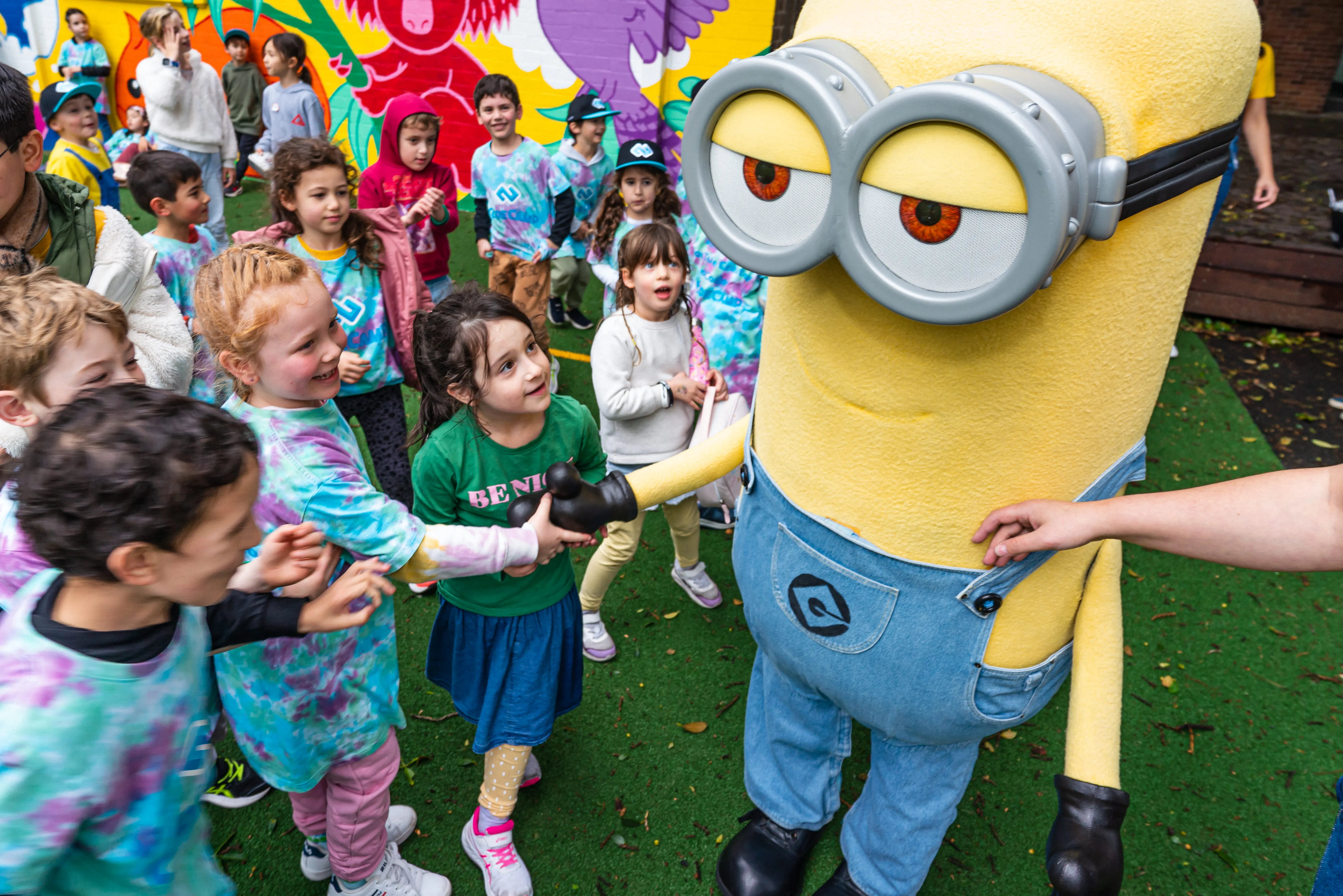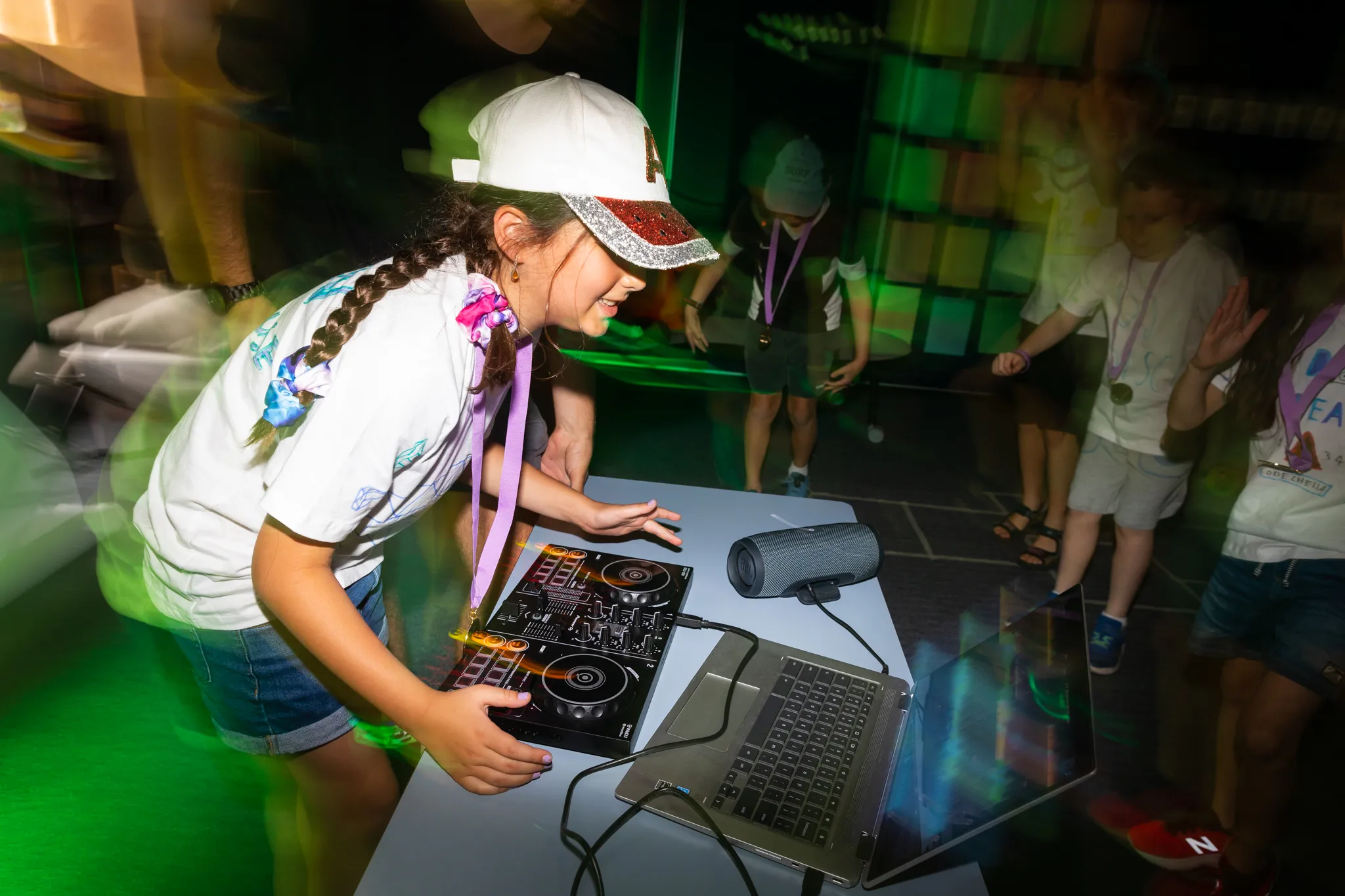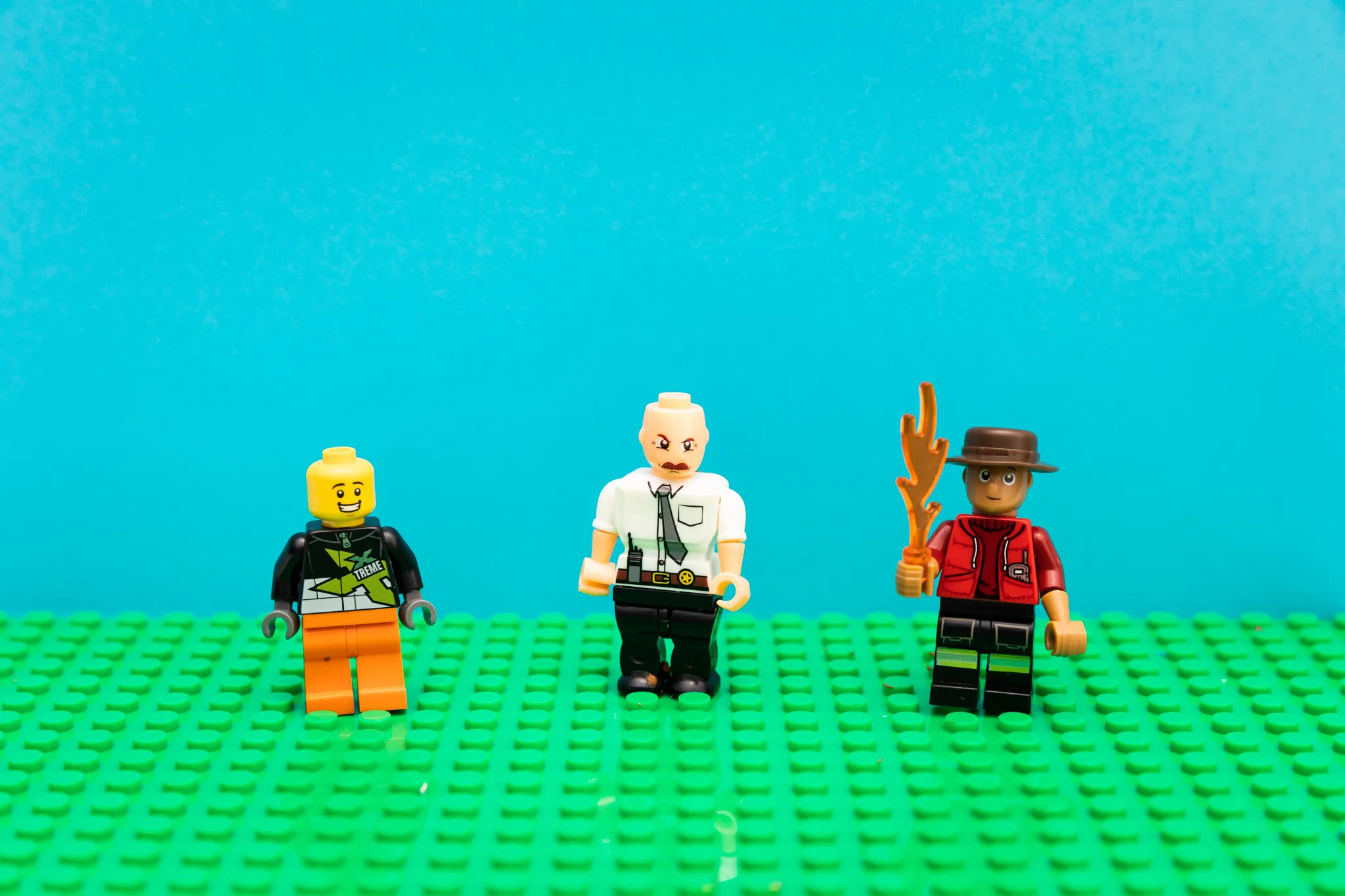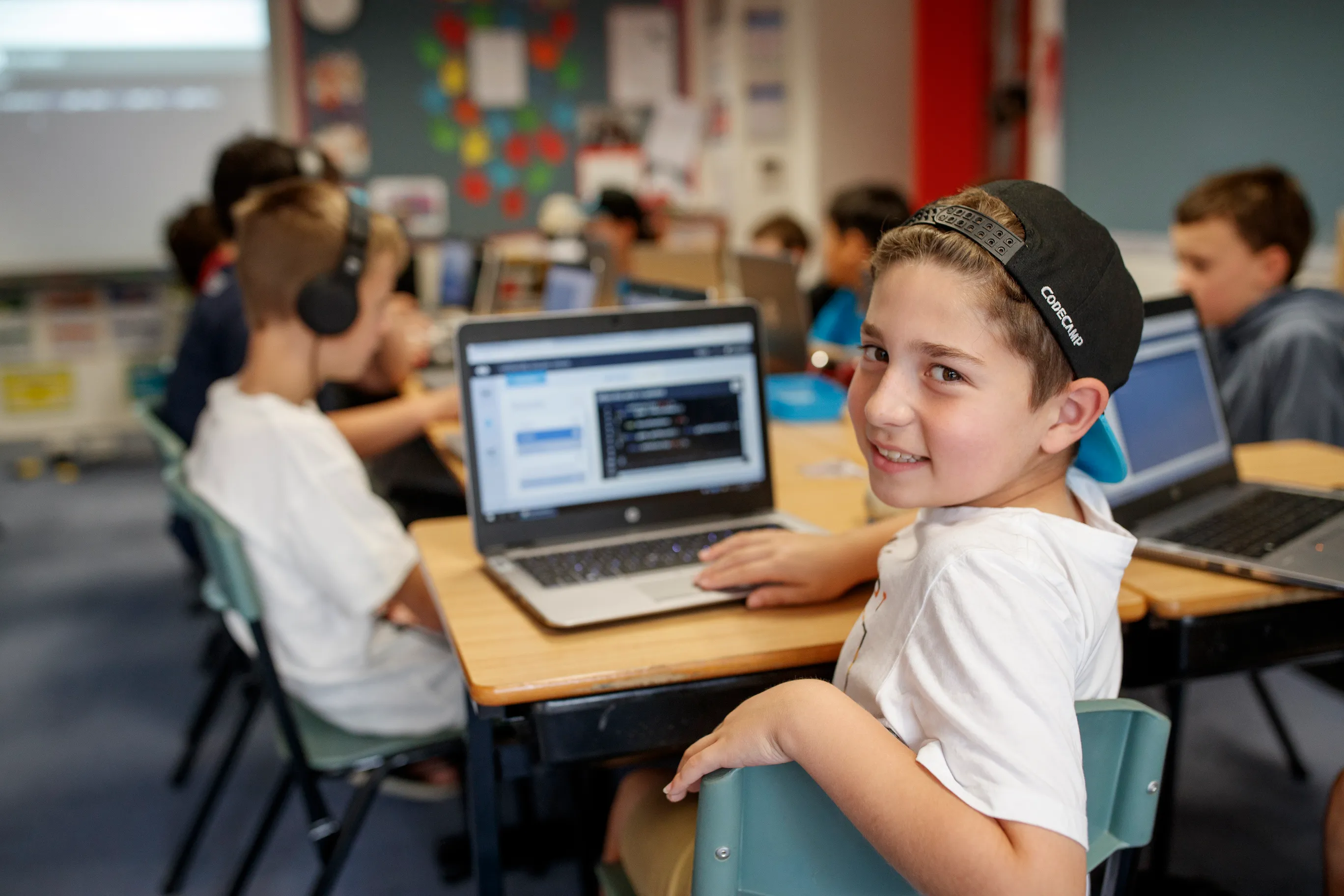
Behind The Scenes: Building Code Camp World 3D
Code Camp World, our very own coding platform, was built with an incredible team of Aussie developers at our Sydney HQ. In the Summer of 2017, we decided to launch the world's first 3D kids coding platform designed specifically for education. Here's an insight from lead designer, Opal Liang into the design process that lead to the release of Code Camp World 3D.
Research, Design & Pre-Production
Contextual Research
Audience
The coding program is aimed at kids between 8-13 years old kids ready to begin line coding in Java Script. All the games created during camps are later published and shared with parents via the Code Camp mobile app. The new 3D assets must appeal to both kids and parents.

Platform
The Code Camp platform is run entirely online, so to give our students the best possible learning experience, it was imperative that our content is lightweight and fast loading.


3D Renders & Game Engine Tests
We took existing 2D character from the CodeCamp graphics library and experimented with different ways of rendering the model in 3D.
We also tested models under different lighting methods within the Unity based engine until we finally reached a solution that translated across from design to render to engine display.

Prototype Pipeline Implementation
One of the key learnings from initial testing was the need to design characters with 3D topology in mind. From this, I changed the way I delivered model sheets. Supplying separate character model sheets detailing topology, colours, textures and scale relation to other characters.


Production, Optimisation & Outcomes
Redefined Production Pipeline
As we come to learn more about the capabilities and limitation of the game engine- we had to make visual decision to accommodate for faster loading of models on the platform.
Engine lighting test results helped us decide on flat colour shading for the bulk of our designed assets, leaving 'baked in' gradient textures for higher fidelity ‘hero’ character models.


Character and Narrative Development
Building on the lesson plans developed for original program; we developed background stories for our characters and set designs.
This helped enriched the 3D game world and made sure that we could cater to the requirements of a Hero’s journey - no matter what story our students wanted to tell.



Creating Variety by Design
Having established a pipeline; the next step was to build variety into the 3D universe with diverse, fun and theme based character packs and environments.
We did this by introducing vastly different shaped models as environmental props; creating level specific textures and colour palettes, as well as recreating the more popular themes from CodeCamp 2D - ie- Candyland, Space and Lavaland.
In-Engine Lighting & Environment Optimisation
Bringing our assets into the Code Camp World platform was where the artist and developers shine.
For every suite of characters and levels, we created matching Sky Backgrounds (that changes lighting - ie- orange light for sky at dusk and cold blue light for night) and Floor Textures (that affects physics and gravity- ie- more float in Space, less
friction on Ice).


UX and UI Optimisation
While we tinkered away with the in-platform game assets; the UX and UI team were making strides on the usability and interface design of the platform.
Seeing the entire platform come together as a functional product was one of the most exciting phases of the project.
![[optimize output image]](https://cdn.prod.website-files.com/5bb2d180c43612d267c85ce4/5c5b7d9df964cdb524a5f184_ezgif-5-83d89fa7ae21.gif)
Project Outcomes
The assets we created were later adapted into the 3D World Builder and AR Creators school holiday programs at Code Camp.
The entire process of designing game graphics for Code Camp World 3D has been a joy of a journey and I’m grateful everyday for having been part of the team that brought to life characters and worlds that will go on to show and inspire children the awesome creative potential of coding.
![[optimize output image]](https://cdn.prod.website-files.com/5bb2d180c43612d267c85ce4/5c5b7e1d9e5312b79684259b_ezgif-5-6d95e518b90e.gif)
![[optimize output image]](https://cdn.prod.website-files.com/5bb2d180c43612d267c85ce4/5c5b7e51f964cd7894a5f2a8_ezgif-5-137f2b222c15.gif)
The Team Behind Code Camp World
This project is a labour of love that could not have been possible without the help and collaboration of the incredible, talented and humble R&D team at Code Camp. Eilish Boyack for her brilliant 3D execution of my designs; Hayden Wheeler and Chris Glover for their patience and game engine dev work; Joshua Shuvalov and Carmen Famularo for their sleek, beautiful UX and UI designs; Louise Muszynski for managing us through deadlines; Josh Morgan, Martina Kainberger and Jo Thatcher for their back-end coding wizardry; Fidel Torres, Dean Mouslimani and Ambrose Hill for their front-end work; and last but certainly not least Dan Zwolenski for leading this mammoth feat of a product development project and giving us the opportunity to be part of such an incredible family.
Your Ultimate school holidays activity list

1. Get creative with Minions
What is it?
Kids go bananas for Minions (pun intended) and these school holidays they can express their fandom making a Minions movie using stop-motion animation techniques. Over 2 days, kids create their own Minions clay characters and design their own film set. The magic begins when they see their characters come to life by taking multiple images of objects and stitching them together to look like they’re moving! - It’s incredibly fun!
Why go?
If they watch their favourite animated movies on repeat, they’ll love creating Minions clay figurines and developing their own story, taking lots of still frames and stitching them together to create their very first movie!
Ages: 5-7

2. Become a DJ
What is it?
Children will take their first steps into the exciting world of mixing music to create their own DJ set.
Why go?
Kids will love mixing their favourite pop tunes using beat matching and transitions on real DJ decks. Plus, they will design their own DJ brand, develop branded merch, and even perform a DJ set to their friends!
Ages: 8-13

3. Pilot a drone
What is it?
Kids learn to pilot a drone using coding to design a flight path and watch in wonder as the drone takes flight!
Why go?
If your kid shows an interest in drones, they can learn more than just the basics of flying. Kids get a taste of cutting-edge technology and learn about coding, problem-solving, engineering, design, and more. They’ll learn about drone tech and safety, movie making, and discover how drones have a positive social impact when used to fight bushfires, rescue koalas, spot sharks on the coast and loads more!
Ages: 9-13

4. Become a YouTuber
What is it?
While they may not end up with YouTube stardom, we’re sure kids will have a new lens on screen time. They will be equipped with the skills to start producing and directing their own ideas instead of simply watching other people's! Plus, they’ll gain confidence ‘performing’ in front of audiences and on set and importantly, learn about staying safe online.
Why go?
Taking a YouTube fixation and turning it into something incredibly productive where kids will learn planning, storytelling, filming and video editing to become the star in their very own YouTube-style videos.
Ages: 8-13

5. Produce a LEGO movie
What is it?
Turn hours of playing with LEGO characters into an even more creative pursuit, by teaching kids to create their own LEGO Movie.
Why go?
They can use their favourite LEGO characters and sets, come up with a fun storyline and use stop-motion techniques to produce a short animation film. It will transform the way they play at home and offer endless hours of creativity for the rest of the holidays.
Ages: 7-12

6. Code a game
What is it?
Kids can design their own arcade-style video games (like Super Mario Bros), jam-packed with cool characters like zombies and unicorns, and awesome gaming features such as invisibility cloaks and shrinking potions. They’ll learn drag and drop code and logic to connect all the design elements together and bring their games to life!
Why go?
Kids are spending countless hours on Roblox and Minecraft these days. Get them to spark their creative side instead, by producing their own original games, using a combination of creative level design, storytelling and problem-solving to bring their creations to life. It’s so much fun, they won’t realise they are actually learning some very important coding and tech skills for their future.
Ages: 7-12

7. Develop a Website
What is it?
For kids with some proficiency in coding, they’ll create their own website from scratch about an animal, movie, sporting team or their favourite topic.
Why go?
With 1.93 billion websites on the world wide web, developers are in higher demand than ever before. It’s a great head start to gain fundamental web building skills and your kids will have so much fun in the process.

